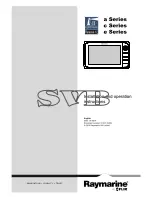
Operating Instructions MI 34 / MI 34 H
GEBAmi34e.11a.docx
18
850 232/14 08/11
Figure 12 – Tympnaogram (normal curve
area is hatched)
Figure 13
auditory canal before the eardrum. Another tube
B
is connected with the
microphone in the probe which receives the sound. Both tubes are lead
together with tube
C
nearly to the eardrum and are made airtight against
the outside pressure by the ear tip. A manometer and a pump which can
produce both over- and under-pressure are connected with tube
C
. The less
sound is reflected by the eardrum to the microphone the more stiff the
eardrum is and with it the middle ear - the eardrum transmits the biggest
part of the sound via the middle ear to the inner ear. The highest
compliance is normally reached with an air pressure corresponding to the
outside pressure.
When performing Tympanometry during a
measurement a continuous change of over-
and under-pressure is performed by the
pump of the instrument in the outer
auditory canal before the eardrum which is
sealed by the ear tip in addition to the
measurement with normal pressure. The
compliance is measured simultaneously and
shown in a diagram, the Tympanogram,
which illustrates the compliance in ml over
the pressure in daPa. In figure 12 the area
for normal Tympanogram curves is hatched.
Here you can see that the highest compliance is reached with normal
pressure. When you create over- or under-pressure the eardrum stiffens -
the compliance decreases. So you can draw conclusions on the condition of
the middle ear from the form and the values of the Tympanogram.
4.2 Training of the test person
Explain to the test person that the measurement is painless,
that nothing gets into the auditory canal and that he does
not have to answer when he hears the faint and deep test
sound and the pressure in the auditory canal changes. In no
case the test person should swallow, chew or move his
head during the measurement.
















































